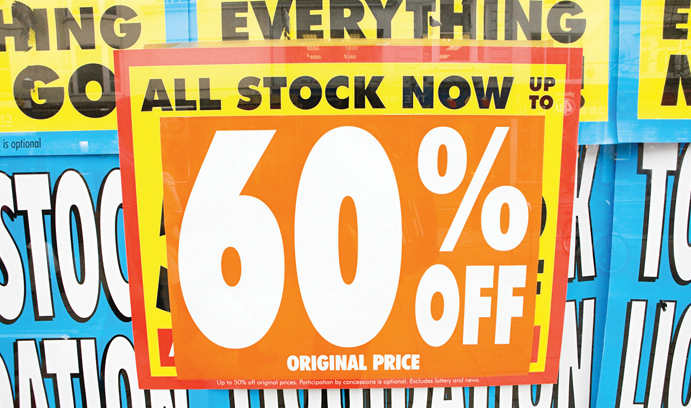Zach Zacharia: Drop Shipping, the New Retail Paradigm

Online retailers have fundamentally changed the way Americans shop. More traditional retailers will have to adapt to the new e-commerce environment if they hope to survive.
Photo: Image Source
Sears, Macy’s and J.C. Penney all closed stores. So did Kmart and Staples and Gap. And Radio Shack, once ubiquitous in malls and downtowns across the country, disappeared almost entirely.
More than 8,600 brick-and-mortar retail stores were shuttered in the United States in 2017. Last year was even harder on retail shops than 2008—the first year of the worst economic recession in American history since the Great Depression—when 6,183 stores closed.
The retail carnage continues apace this year, with hundreds of retail store closings affecting chains such as The Bon-Ton, Payless ShoeSource and Rite Aid drugstores, among many others. Toys R Us, once the most popular toy retailer in the country, closed its U.S. stores as it went through bankruptcy.
While the stories behind traditional retail’s recent struggle might vary from store to store, each of them has suffered at the hands of one common foe: e-commerce. In fact, 2017 was the first year that more holiday shopping was done online than at traditional brick-and-mortar stores.
Amazon and other online retailers have fundamentally changed the way Americans shop, and if more traditional retailers are going to survive the rapidly shifting environment, they are going to have to adapt or die. So says Zach G. Zacharia, associate professor of supply chain management and director of Lehigh’s Center for Supply Chain Research.
One of the adaptations that is helping some traditional retailers is something called “drop shipping,” according to Zacharia, who researches how retailers and suppliers are using this method to acclimate to the changing retail world.
What is Drop Shipping?
In drop shipping, a customer places an order with the retailer—typically on a website—and the order is forwarded to a supplier who ships the product directly to the customer without it ever touching the retailer’s hands. Ultimately, Zacharia says, e-commerce will account for at least 15-20 percent of all retail commerce, and the majority of e-commerce shipping will be drop shipping.
In theory, it has increased retailers’ profits because much of their handling, storage and shipping costs are eliminated. But the reality is far more complex and fraught with risk for retailers, Zacharia says.
If the supplier has run out of the product, there will be a higher cost to the retailer for making a back order and a longer wait to the customer to receive the product, if it is even available at all. And if there is no product available, or if it arrives late or damaged, that translates into a bad customer experience. According to one survey, Zacharia says, customers will abandon a retailer 70 percent of the time after just one bad delivery.
Drop shipping also puts new hardships—mostly costs—on suppliers, Zacharia says. It’s more expensive for labor, packaging and transportation to ship more small packages to individual customers than to ship fewer larger packages to retailers. And as more retailers rely on drop shipping, as opposed to ordering in bulk to stock brick-and-mortar shops, it becomes increasingly difficult to plan for labor costs and materials on the production side, he says.
The key going forward, Zacharia says, is for retailers and suppliers to develop a more collaborative, co-dependent relationship.
“Retailers need to share more of their forecast data. They need to predict what kind of sales they are expecting so that the supplier has some way of having workers available to ship product,” Zacharia says. “And the supplier has got to find some way of giving real-time data to the retailer so that the retailer doesn’t sell items that have already been sold out.”
Zacharia says he is continuing to do research, surveying both retailers and suppliers on the practices that have worked best for them. He will provide recommendations for both retailers and suppliers to consider.
Initial survey results yielded a revelation, he says. “What I found surprising, that even though there is a greater cost initially, the more experience that you have with drop shipping, the greater profit that [suppliers] have, which suggests to me that they figured out ways to ameliorate the cost or at least share the costs with the retailer,” Zacharia says.
Suppliers may ultimately have more to gain in the changing retail atmosphere as they obtain more control over relationships with retailers and more direct contact with and knowledge of their own retail customers, Zacharia says.
Some, like international apparel and footwear company VF, which owns brands like Wrangler, The North Face and Timberland, have announced they will soon begin selling their entire product line directly to customers from their own websites in North America.
But this kind of strategy will work only with suppliers who have brands that are already well-known to consumers, he says. That still leaves room for crafty and adaptable retailers to continue to thrive.
“The overall thrust of what I’m saying is that it is a new retail world,” Zacharia says. “You really need to collaborate. You really need to figure out how you can share information and figure out how to share the costs; otherwise, you’re not going to survive.”
Story by: Daryl Nerl
Posted on:




